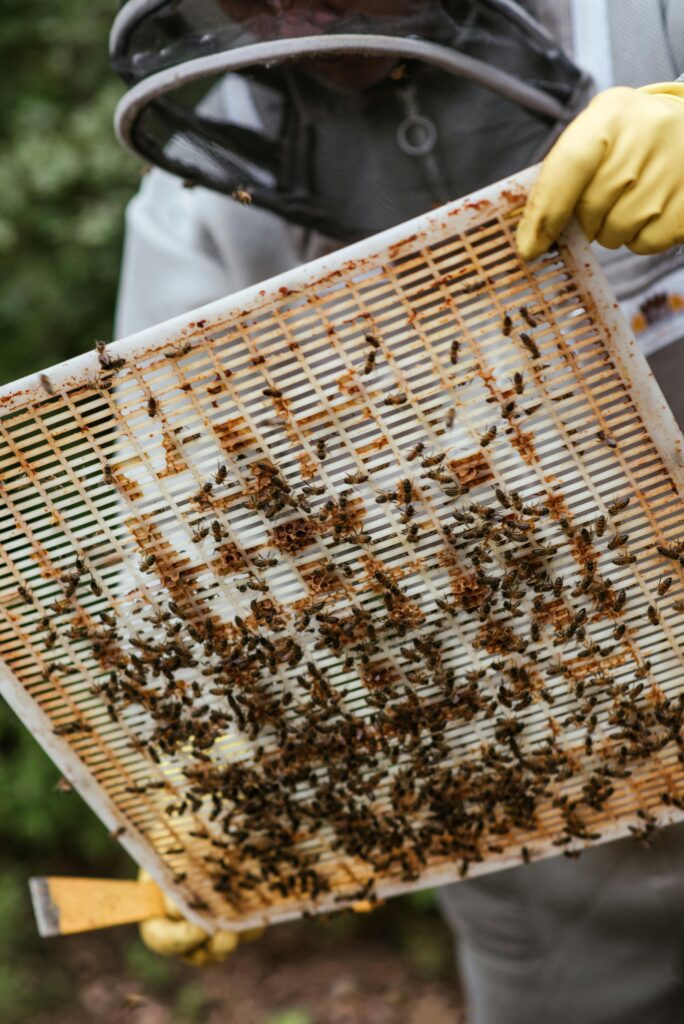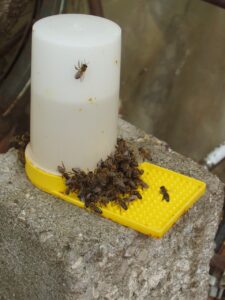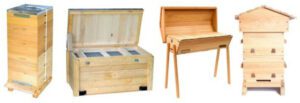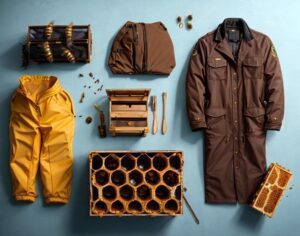Selecting the right queen excluder is crucial for effective hive management. Queen excluders play a vital role in maintaining a well-organized hive by preventing the queen from laying eggs in the honey supers, thereby ensuring cleaner honeycombs and easier hive inspections. With various options available on the market, it can be challenging to determine which queen excluder best suits your beekeeping needs. This article provides ten essential tips to help you choose the right queen excluder for your hive, considering factors such as material, size, durability, and cost. By following these tips, you can make an informed decision that enhances your hive’s productivity and health.

Table of Contents
1. Understand the Purpose of a Queen Excluder
Importance of Separating Brood and Honey
Queen excluders are designed to keep the queen confined to the brood area, preventing her from laying eggs in the honey supers. This separation ensures that the honey harvested is free of brood, making it cleaner and easier to extract. Understanding this purpose helps you appreciate the role of queen excluders in maintaining hive organization and optimizing honey production.
Impact on Hive Management
By preventing the queen from entering the honey supers, queen excluders also make hive management tasks, such as honey extraction and pest control, more straightforward and efficient. This focused approach to hive management helps beekeepers maintain healthier and more productive colonies. Here are our 10 Tips for Beekeepers Locating the Queen Bee During Hive Inspections.
2. Queen Excluder Materials Matter: Plastic vs. Metal
Pros and Cons of Plastic Excluders
Queen excluders are typically made from plastic or metal, each with its advantages and disadvantages. Plastic excluders are lightweight, affordable, and easy to handle, making them ideal for beekeepers who prioritize ease of use and cost-effectiveness. However, they may degrade faster over time and are more prone to warping in extreme weather conditions.
- Lightweight and Easy to Handle: Plastic excluders are lighter compared to metal, making them easier to lift and install during hive inspections.
- Affordable Option: They are generally more cost-effective than metal excluders, making them ideal for beekeepers on a budget or those with smaller operations.
- Resistant to Corrosion: Unlike metal, plastic excluders do not rust or corrode, making them suitable for humid or damp conditions.
- Easy to Clean: Smooth plastic surfaces are easy to wipe down, minimizing the buildup of debris and wax that can affect hive hygiene.
- Variety of Designs: Available in various colors and designs, some with integrated ventilation holes or bee space management features.
Benefits of Metal Excluders
Metal excluders, on the other hand, offer superior durability and longevity. They withstand repeated use and weather exposure without warping or breaking, making them a reliable choice for long-term hive management. Despite being more expensive upfront, metal excluders often provide better value due to their extended lifespan.
- Durable and Long-lasting: Metal excluders are robust and can withstand years of use without warping or breaking, making them a reliable long-term investment.
- Stable Structure: They provide a stable platform for the bees, reducing the risk of accidental damage during hive inspections or movements.
- Effective Barrier: Metal excluders offer a secure barrier that prevents the queen from passing through, ensuring effective separation of brood and honey storage areas.
- Heat Conductivity: They may help regulate hive temperature by dissipating heat more effectively than plastic excluders, beneficial in warmer climates.
- Suitable for Commercial Operations: Preferred by commercial beekeepers due to their durability and ability to withstand frequent use and handling.
3. Choosing Queen Excluder Size and Fit
Importance of Proper Sizing
Selecting the right size queen excluder is essential for ensuring it fits your hive properly. An excluder that doesn’t fit snugly can create gaps that allow the queen to pass through, defeating its purpose. Measure your hive components accurately to find an excluder that matches perfectly, ensuring effective separation between brood and honey storage areas.
- Measure Hive Components: Take precise measurements of your hive frames and boxes to determine the dimensions needed for the excluder.
- Consider Hive Type: Different hive types (e.g., Langstroth, Top Bar) may require specific sizes or shapes of excluders. Choose accordingly.
- Check Compatibility: Ensure the excluder is compatible with your hive setup, including the depth of frames and boxes.
- Avoid Gap Formation: Select an excluder that fits snugly without gaps to prevent the queen from bypassing it. This maintains separation between brood and honey storage areas.
- Customization Options: Some suppliers offer custom-sized excluders to fit non-standard hive configurations or specialized setups.
- Double-check Dimensions: Verify measurements before purchasing or installing to avoid mismatches that could compromise hive organization.
- Consult Beekeeping Experts: Seek advice from experienced beekeepers or suppliers if unsure about the correct size or type of excluder for your hive.
- Evaluate Long-Term Fit: Consider how the excluder will fit as the hive grows and expands over time. Adjust if necessary to accommodate hive development.
Customization Options
While standard sizes are available for most hive configurations, some beekeepers may require custom-sized excluders for specific hive setups or specialized beekeeping practices. Manufacturers or suppliers often offer customization options to meet these needs, ensuring optimal performance and hive management efficiency.
4. Durability and Longevity
Factors for Longevity
Durability is a key consideration when choosing a queen excluder. Durable queen excluders can withstand the wear and tear of regular hive inspections, environmental exposure, and interactions with bees. Look for excluders made from high-quality materials, such as stainless steel or robust plastics, that are designed to endure the rigors of beekeeping over multiple seasons.
Maintenance Tips
Regular maintenance plays a crucial role in extending the lifespan of your queen excluder. Clean the excluder regularly to remove debris and prevent buildup that can compromise its effectiveness. Inspect for signs of wear, such as rust or bent wires, and replace or repair as needed to ensure continued functionality and hive health.
- Cleaning Schedule: Establish a regular cleaning schedule to remove debris, wax, and propolis from the excluder. Aim for cleaning during hive inspections or at least once every few weeks.
- Cleaning Method: Use a soft brush or cloth with mild soap and water to clean the excluder. Avoid harsh chemicals that could leave residues harmful to bees.
- Inspect for Wear: During cleaning, inspect the excluder for signs of wear, such as rust, corrosion, or bent wires. These issues can compromise its effectiveness.
- Repair or Replace: If you notice any damage or deterioration, such as rusted metal or broken plastic parts, consider repairing or replacing the excluder promptly.
- Storage and Handling: Store excluders properly when not in use to prevent damage. Handle them with care during installation and removal from hives to avoid bending or warping.
- Monitor Effectiveness: Regularly monitor how well the excluder is performing its function. Ensure bees are not bypassing it and that it maintains a secure barrier between brood and honey supers.
- Consult Manufacturer Guidelines: Follow any specific maintenance recommendations provided by the excluder’s manufacturer to ensure optimal performance and longevity.
5. Ease of Cleaning
Importance of Hygiene
An easy-to-clean queen excluder helps maintain hive health by reducing the buildup of debris, wax, and pathogens. Smooth surfaces and minimal crevices make cleaning straightforward, allowing beekeepers to maintain a hygienic environment for their bees.
- Smooth Surfaces: Excluders with smooth surfaces minimize areas where debris and wax can accumulate, making cleaning more efficient.
- Minimal Crevices: Designs with minimal crevices or seams reduce the risk of buildup, allowing beekeepers to maintain a cleaner environment for their bees.
- Material Choice: Certain materials, such as stainless steel or plastic with non-stick coatings, repel debris and wax more effectively, simplifying the cleaning process.
- Removable Parts: Excluders that can be easily disassembled or have removable components facilitate thorough cleaning and inspection.
- Compatibility with Cleaning Solutions: Some excluders are designed to be compatible with common cleaning solutions or are dishwasher-safe, further streamlining maintenance.
- Durable Construction: High-quality materials and construction ensure that excluders withstand frequent cleaning without degradation or warping.
- Design Considerations: Considerations like rounded edges or seamless construction make it easier to wipe down or brush off debris during routine maintenance.
Cleaning Practices
Incorporate regular cleaning of your queen excluder into your hive management routine. During inspections, remove the excluder and gently scrub it with a mild detergent solution to remove any residue. Rinse thoroughly with clean water and allow it to dry before reinserting into the hive. This simple practice promotes hive cleanliness and ensures optimal performance of the excluder.
6. Ventilation and Airflow
Impact on Hive Environment
Proper ventilation is crucial for a healthy hive environment, and ventilated queen excluders can impact airflow within the hive. Choose an excluder design that promotes good ventilation, allowing air to circulate freely through the hive. Adequate airflow helps regulate temperature and humidity levels, contributing to the overall well-being and productivity of your bee colony.
Design Considerations
Consider excluder designs that incorporate perforations or strategically placed gaps to facilitate airflow within the hive. These designs help maintain optimal hive conditions by allowing air circulation while still effectively keeping the queen separated from the honey supers. Perforated metal excluders, for example, offer durability and allow for adequate ventilation without compromising the excluder’s functionality. Similarly, plastic excluders with molded ventilation slots or mesh patterns provide airflow while maintaining hive organization. Some beekeepers prefer wooden excluders with drilled holes, which offer a natural aesthetic and sufficient ventilation. Choosing the right design depends on your hive’s specific needs, climate considerations, and beekeeping practices, ensuring your colony remains healthy and productive throughout the beekeeping season.
7. Bee Space Considerations
Maintaining Bee Space
Bee space, the precise gap bees require to move comfortably throughout the hive, is a critical factor in hive design and management. Ensure your queen excluder respects bee space standards to prevent bees from building comb or propolis in unwanted areas, which can disrupt hive organization and hinder efficient hive inspections.
Minimizing Disruption
Choosing an excluder that maintains appropriate bee space minimizes disturbances to the colony’s natural behavior and workflow. This promotes a harmonious environment within the hive, supporting colony productivity and facilitating effective beekeeping practices.
8. Compatibility with Hive Components
The Beehive Chronicles: 6 Types of Hives for Bee Keeping and Advanced Apiculture Practices
Integration with Hive Components
Compatibility with other hive components, such as frames and boxes, is essential for seamless hive management. Verify that the queen excluder fits well within your hive setup, ensuring a tight seal and preventing gaps that could compromise its effectiveness.
Potential Issues
Incompatibility between the excluder and hive components can lead to misalignments or gaps that allow the queen or worker bees to bypass the excluder. Addressing compatibility issues during setup or maintenance ensures consistent hive management and enhances the excluder’s ability to maintain separation between brood and honey supers.
- Verify Frame Dimensions: Ensure that the excluder aligns properly with the dimensions of your hive frames and boxes to prevent gaps.
- Check Hive Depth: Consider the depth of your hive components when selecting an excluder to ensure it fits snugly without leaving spaces that bees can exploit.
- Evaluate Frame Spacing: Confirm that the spacing between frames accommodates the excluder without causing misalignments or disruptions to hive structure.
- Inspect Hive Structure: Regularly inspect hive components to detect any shifts or movements that may affect the excluder’s placement or effectiveness.
- Adjust as Needed: If mismatches or gaps are identified, adjust or replace the excluder promptly to maintain effective separation between brood and honey supers.
- Consider Hive Expansion: Anticipate hive growth and expansion when installing or replacing excluders to accommodate changes in hive dimensions over time.
- Consult Manufacturer Guidelines: Follow recommendations provided by the excluder’s manufacturer regarding installation and compatibility with specific hive configurations.
- Seek Professional Advice: Seek advice from experienced beekeepers or hive suppliers if unsure about compatibility issues or solutions for your hive setup.
9. Reviews and Recommendations
Importance of Research
Researching and reading reviews provide valuable insights into the performance and reliability of different queen excluders. Seek recommendations from fellow beekeepers, online forums, and trusted sources such as beekeeping associations or industry publications to gather diverse perspectives and experiences. Look for feedback on durability under various weather conditions, ease of cleaning, and effectiveness in maintaining hive organization. Additionally, consider reaching out directly to suppliers or manufacturers to inquire about specific features or benefits not covered in general reviews. This comprehensive approach ensures you make an informed decision based on real-world experiences and expert advice, ultimately benefiting your hive management practices.
Evaluating Feedback
Pay attention to feedback on durability, ease of use, and overall satisfaction when selecting a queen excluder. User reviews and expert opinions can help you make an informed decision that aligns with your beekeeping goals and operational needs.
10. Cost vs. Value
Long-term Investment
While cost is an important consideration, evaluating the value and benefits of a quality queen excluder over its lifespan is crucial. Investing in a durable, effective excluder not only saves on replacement costs and maintenance efforts but also enhances hive productivity and health. A well-chosen excluder supports cleaner honey extraction and smoother hive inspections, contributing to overall bee colony efficiency and longevity.
Budget Considerations
Balance your budgetary constraints with the long-term advantages of a high-quality queen excluder. Consider factors such as material durability, maintenance requirements, and operational benefits to maximize the return on your investment in hive management and honey production efficiency.
Additional Resources
10 Essential Honey Bee Supplies Every Beekeeper Needs
6 Ways Queen Bees Influence Hive Behavior and Productivity
Honey Bee Queens Do Not Count Mates to Assess their Mating Success
Conclusion
Choosing the right queen excluder is essential for effective hive management and optimizing honey production. By considering factors such as material, size, durability, and cost, you can make an informed decision that enhances your hive’s productivity and health. Remember to research and read reviews, ensure compatibility with your hive components, and prioritize durability and ease of cleaning. With the right queen excluder, you can maintain a well-organized hive and enjoy the benefits of cleaner, brood-free honey.



